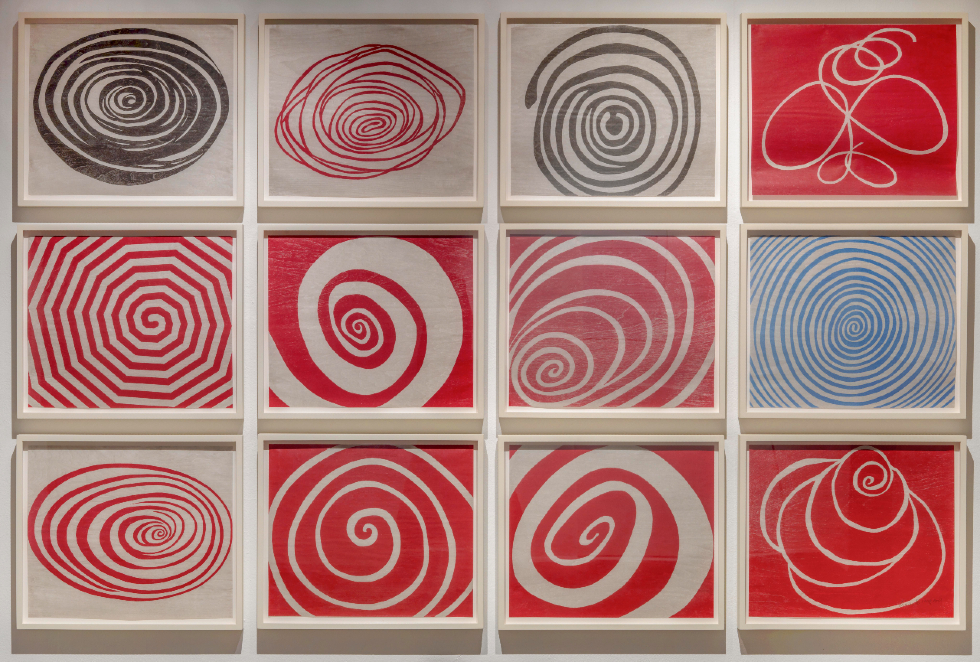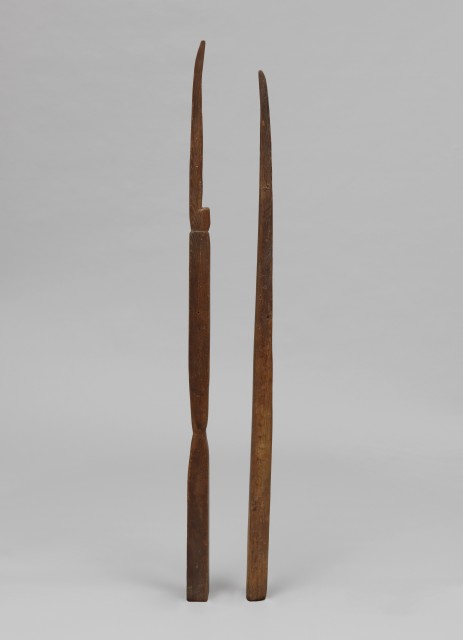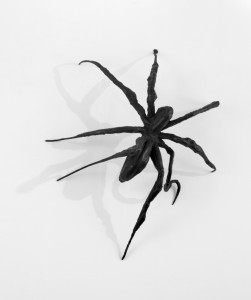“Art is a guaranty of sanity” – Louise Bourgeois In Focus

I AM AFRAID OF SILENCE
I AM AFRAID OF THE DARK
I AM AFRAID TO FALL DOWN
I AM AFRAID OF INSOMNIA
I AM AFRAID OF EMPTINESS
IS SOMETHING MISSING?
YES, SOMETHING IS MISSING AND ALWAYS WILL BE MISSING
THE EXPERIENCE OF EMPTINESS
Louise Bourgeois, from I Am Afraid, 2009
“The artist has the privilege of being in touch with his or her unconscious, and this is really a gift.” As a new Louise Bourgeois display opens at Tate Liverpool, curator Tamar Hemmes argues that the artist’s regularly biographical approach was the making of her…
Louise Bourgeois lived a turbulent life. Endlessly creative and continuously inspired by her personal trauma, she was a woman of extremes: outwardly hard, but inwardly sensitive, she faced many demons. Her work, made during a career that spanned almost 80 years, addressed many of her most profound fears and anxieties, reconstructing painful memories time and time again in an effort to heal. Her sculptures, prints and gouaches are raw, honest and immediate. Addressing key topics such as isolation, sexuality and motherhood, they contain and represent revelations of the artist’s mental state.
Born on 25 December 1911 in Paris, Bourgeois and her family soon moved to the outskirts of the city. Along the tree-lined river Bièvre, they set up a business restoring antique tapestries. Here, she would sit out in the sun, helping her mother with the stitching and mending of textiles. Life wasn’t always so idyllic. Bourgeois’ mother Joséphine contracted the Spanish flu and never fully recovered. In a reversal of roles, her education was often interrupted as she had to take on caring responsibilities.
 When Bourgeois was twelve years old, Sadie Gordon Richmond joined the family, a British au pair who would stay with them for ten years. She eventually learned that her father had been having an affair with Richmond; this betrayal by a man she so adored instilled her with a fear of abandonment that marked the rest of her life and work. Reflecting on these traumatic events later in life she described the spiral, an often-recurring symbol in her work, as “… a twist. As a child, after washing tapestries in the river, I would turn and twist and ring them… Later I would dream of my father’s mistress. I would do it in my dreams by ringing her neck.”
When Bourgeois was twelve years old, Sadie Gordon Richmond joined the family, a British au pair who would stay with them for ten years. She eventually learned that her father had been having an affair with Richmond; this betrayal by a man she so adored instilled her with a fear of abandonment that marked the rest of her life and work. Reflecting on these traumatic events later in life she described the spiral, an often-recurring symbol in her work, as “… a twist. As a child, after washing tapestries in the river, I would turn and twist and ring them… Later I would dream of my father’s mistress. I would do it in my dreams by ringing her neck.”
In 1932, following the death of her mother, Bourgeois entered her first deep depression. She ended her studies in mathematics at the Sorbonne and turned to the arts as a way of expressing herself. A few years later, she met and married American art historian Robert Goldwater before moving to New York City, where she had three sons. Much of Bourgeois’ work is about the cyclical nature of life – birth, life, death and rebirth. She was open about her profound fears and conflicting emotions surrounding motherhood, addressing issues such as postnatal depression – long ignored rather than openly spoken about. From the 1940s, the motif of the spider began to appear in her work, becoming a more prevalent and familiar symbol in the 90s when Bourgeois began making her now iconic monumental sculptures. She likened the spider to her mother; a repairer and protector, yet also a predator and something that many people fear.

In 1951, suffering from depression following the death of her father, Bourgeois turned to psychoanalysis. Attending sessions four times a week, therapy became a significant part of her life for the next thirty years. She saw her art as being parallel to psychoanalysis and her notes on the subject often made their way into her work. This is demonstrated in her text-based series What Is The Shape of This Problem (1999), which features the phrase “Art is a guaranty of sanity” [sic] and references the artist’s hope for transformation. It could be said her art was what saved Bourgeois, as it provided a way of facing and processing difficult emotions that might otherwise have remained bottled up. Of this she said, “The artist has the privilege of being in touch with his or her unconscious, and this is really a gift. It is the definition of sanity; it is the definition of self-realisation.”
In footage of one of her Sunday Salons, which were open to anyone who wanted to present their work, she has a heated response to an artist who explains the premise of her work as being about “the torment of being an artist”. A clearly frustrated Bourgeois exclaims that this idea is idiotic. These often-tense gatherings have been described by many as group therapy sessions, with young artists sometimes receiving brutal feedback and leaving in tears.
Though Bourgeois’ work was shown in exhibitions throughout the years, she did not get the recognition she deserved until the Museum of Modern Art’s Louise Bourgeois: Retrospective of 1982, the museum’s first large-scale survey of a female artist. Although by this time, she was in her 70s, the exhibition introduced her work to a wider audience, and she did not slow down. Big, international exhibitions followed at some of the world’s most renowned institutions. Louise Bourgeois was far ahead of her own time, and for many years people were not ready to face the brutal honesty and personal nature of her work. Now, at a time when conversations around mental health are becoming increasingly open and commonplace, and as taboos around anxiety, isolation and depression are slowly lifted, she fits perfectly into ours.
Tamar Hemmes is Assistant Curator at Tate Liverpool.
See Artist Rooms: Louise Bourgeois In Focus at Tate Liverpool, 24 July 2021 – 16 January 2022
Images, from top: © The Easton Foundation/VAGA at ARS, NY and DACS, London 2020. Louise Bourgeois, Spirals, 2005, ARTIST ROOMS, Tate and National Galleries of Scotland. Lent by Artist Rooms Foundation 2013; Louise Bourgeois, KNIFE COUPLE, 1949. Lent by the Tate Americas Foundation, courtesy of the Easton Foundation in honour of Frances Morris 2016; Louise Bourgeois, Spider I 1995, ARTIST ROOMS, Tate and National Galleries of Scotland. Lent by Artist Rooms Foundation 2013





